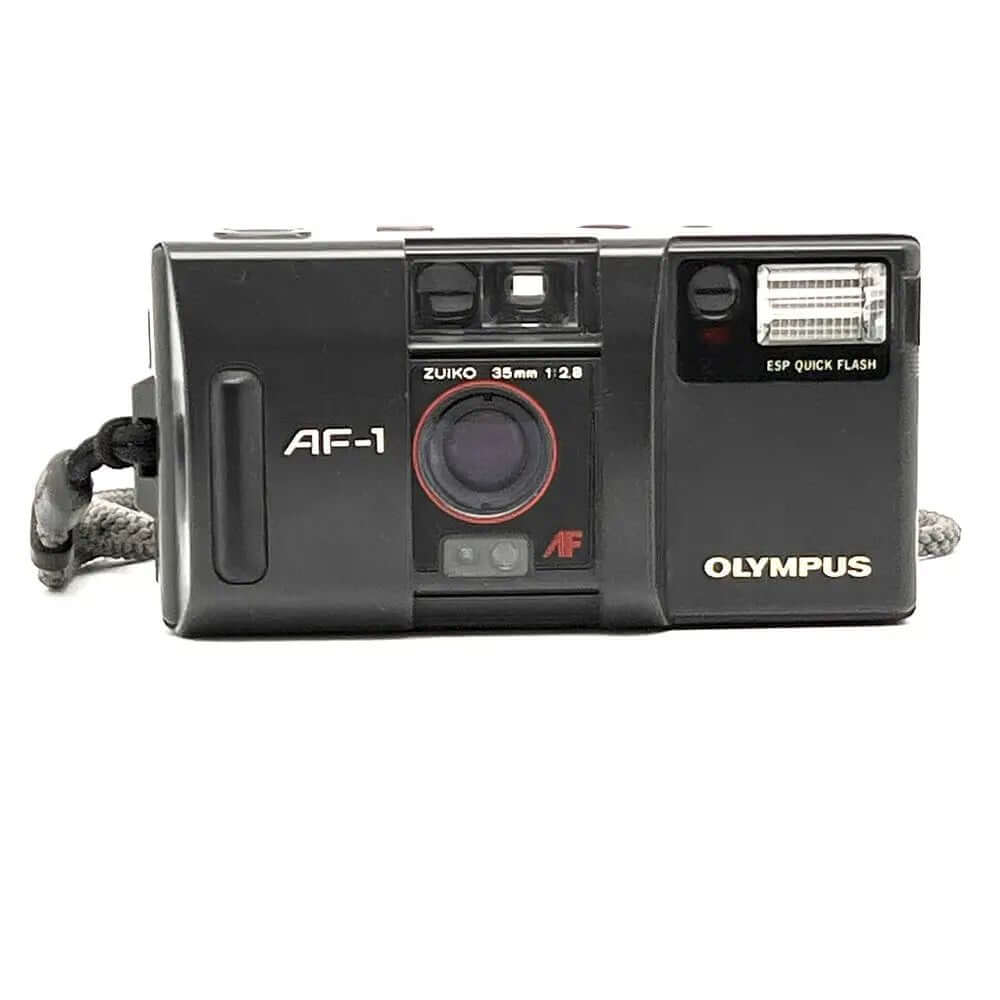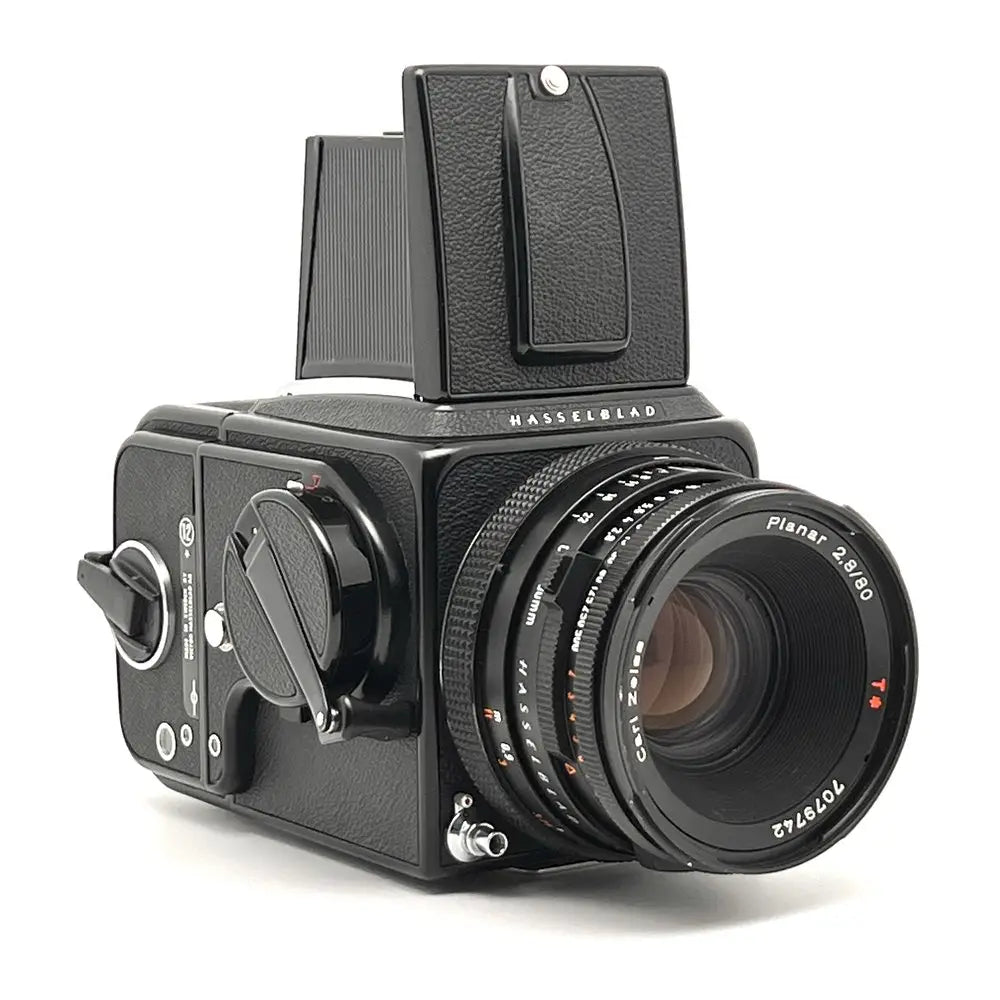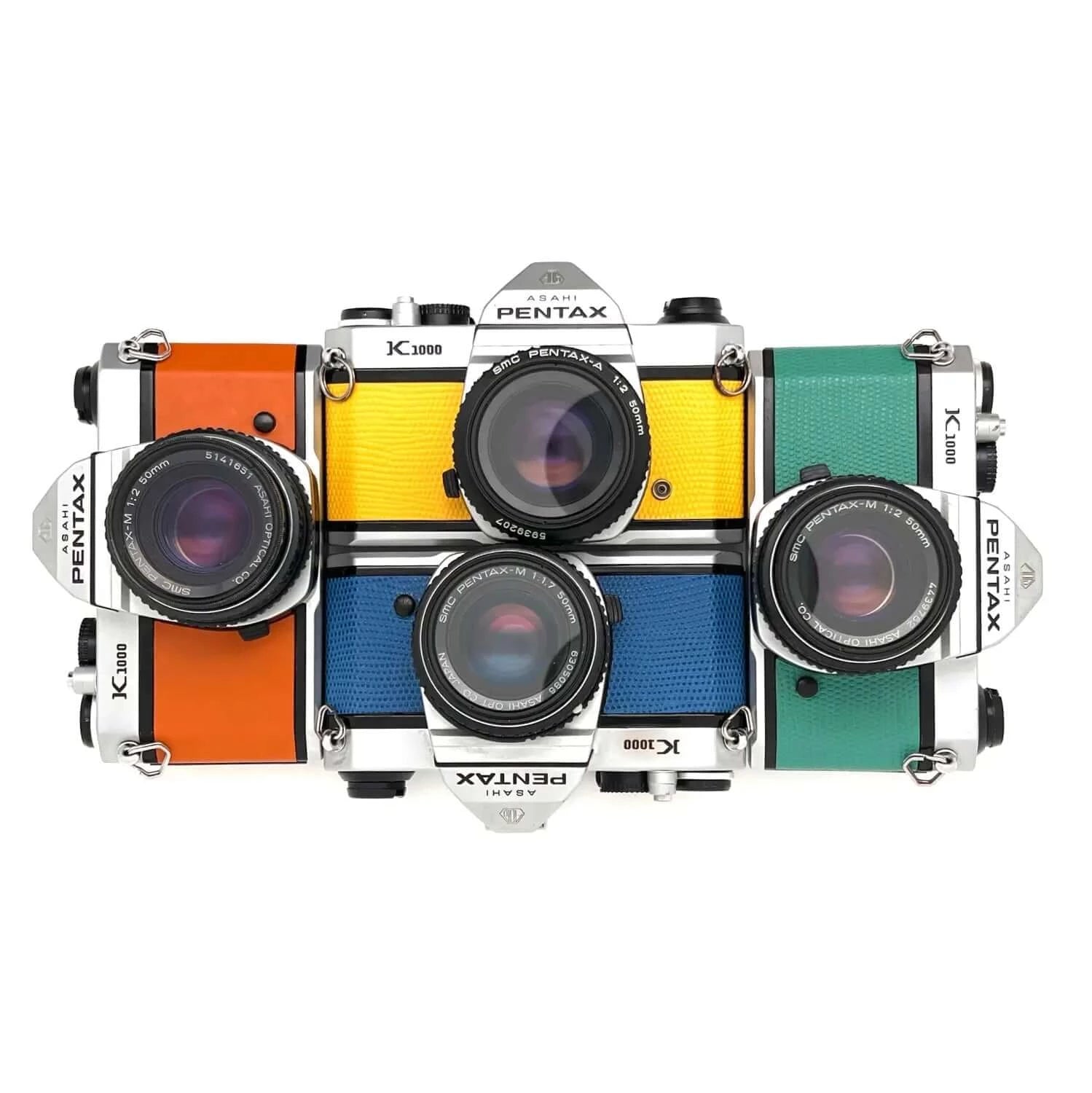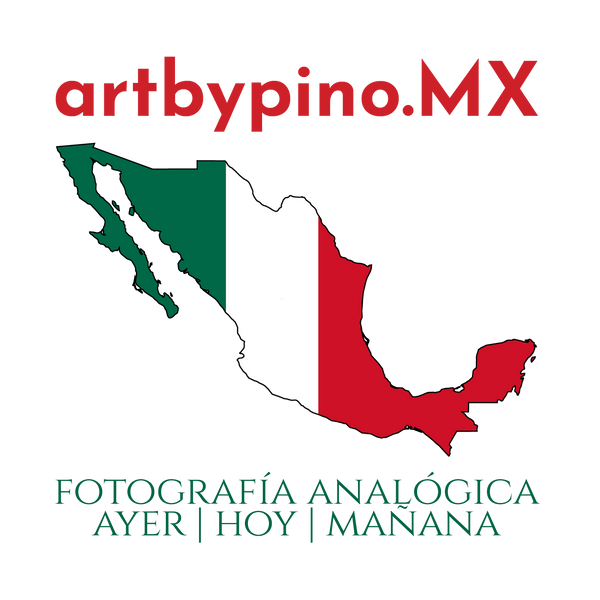
What Film Camera Should I Buy?
Share
See my article on the reasons why film photography is coming back.
Ever ask yourself ‘which film camera should I buy?’ or ‘What is the best film camera?’ or ‘Where can I buy film cameras?’ or ‘Who sells film cameras near me?’ Or Disposable Film Cameras?

Beginner point & shoot 35mm film camera

Canon Canonet QL17 GIII 35mm Rangefinder Film Camera

Olympus OM-1N 35mm SLR film Camera

Film Formats Compared by Photography Bay, click image for original article
What Kind of Film Cameras Are There? Do They Still Make Film Cameras?
-
Instant Film Cameras like Polaroid or Fuji Instax provide you with an instant print and have a cool retro or vintage look to them. They are also available in black & white film. There is little to no creative control over the exposure, like being able to control the shutter speed or the aperture.
-
Point & Shoot 35mm Film Cameras may be a good point or place to start your film photography journey. Stop by a thrift or pawn shop and see if you can find something cheap for $20. Cheap, meaning that it may or may not work. Unless you take a variety of batteries with you, it is unlikely that you will be able to test the functionality. Cheap also means that the picture quality will be low for most P&S as they use cheap plastic lenses. Unless you buy a high-end P&S, results will likely be less than average. But it is a good route if you want to dabble in film photography and are an occasional shooter. Of course, you could buy disposable film cameras that are easily available in Walmart, CVS, Walgreens, and, Target, or of course, on Amazon. Fujifilm and Kodak are the two main makers of disposable cameras. I recommend using the Kodak 800 disposable camera as it is versatile enough for you to shoot in full sun or evening light or indoors. If you are shooting indoors, don’t expect decent results with a Fujifilm disposable camera. Expect blurry and dark pictures if you don’t use the built-in flash. Flash tends to make pictures look harsher. Yes, sometimes, that gives it a cool effect.
-
35mm Single Lens Reflex (SLR) Cameras which offer full manual operation - allow you to adjust the ISO, shutter speed, and aperture. Most have a built-in exposure meter indicating whether your exposure settings are good for a balanced exposure. I recommend the Pentax K1000 with a 50mm lens if you want to try out film photography and are unsure whether you will dive deep into it. Most vintage cameras you will buy (as they are no longer manufactured) will need the light seals in the film chamber and the mirror foam replaced as they have disintegrated due to age. While you can DIY, I don’t recommend it unless you completely remove every fragment of the old seals and foam; the replacement ones will not stay in place. Also, online forums or Facebook Groups will make you believe you can stop by Michaels and pick up felt or other material and do it yourself. Instead, I recommend paying $12-15 (average cost on eBay) and buying a kit of seals and foam laser cut for your specific camera model. Best to let a local camera shop do the job for you. For example, when I replace the light seals and foam for a Customer, I film test the camera after I have installed the replacements to ensure a perfect installation.
I recommend the Pentax K1000 over a Canon AE-1 because if the battery dies in a Canon AE-1, the camera stops working as the shutter mechanism is electronically controlled. It also powers the built-in light meter. With a K1000, if the battery dies, the camera still works as the shutter is mechanical. The built-in light meter will stop working. You can use a smartphone lightmeter app (not recommended for newbies; use a handheld meter if you are serious about film photography). The Pentax K1000 is simple to use; parts are easily available. Unless you buy a camera that has already been cleaned, lubricated, and adjusted (in other words, overhauled), any film camera you buy will need work.The advantage of a 35mm SLR camera is that you are investing in a system. You can invest in different lenses based on your expanding interest in film photography. Start with a 50mm lens (f1.7 or f1.8, or f2). If you have extra money, go for an f1.4 or f1.2, as they will allow photography in low light. Later on, add a 70-200 zoom lens. For architecture and landscape photography, add a 28mm wide-angle lens. If you want sharp results, I recommend using fixed focal length lenses, also known as prime lenses, instead of zoo lenses that handle a focal range instead of a fixed focal length.
If you are looking for a more premium 35mm SLR film camera that will increase in value, go with the Olympus OM series. A OM-1 or OM-1N or OM-2 or OM-2N. -
Medium Format Roll Film Camera: So, you already have a decent 35mm SLR film camera. Now explore Medium Format, which uses 120 (not mm like 35mm, it is just 120) roll film. Why, you might ask do I recommend getting an MF camera as your second film camera? The size of the film or negative is much bigger than a 35mm film. What that means is that your image is recorded over a larger area. Meaning that you get more details in the picture. You get a better dynamic range. You can make larger enlargements on the print without a noticeable loss of sharpness.
Depending on the frame size of your MF camera, you get a different number of frames or images from the same roll of 120 films. So, for example, you get 12 images on a 6x6cm format camera. The best starter camera for the medium format I recommend is the Yashica Mat 124 (without the G), which has incorporated the best features of a Rolleicord and Rolleiflex but added a built-in CDS cell battery-powered meter. You match the two exposure needles and take your shot after focusing. Doesn’t get any simpler. No external light meter is needed. Of course, if you prefer name-brand stuff, go for Rolleiflex or Rolleicord and pay more than the Yashica. Few folks can tell the difference between images taken with the name-brand cameras versus the budget Yashica camera. Amongst the Rolleicords, I recommend the Rolleicord V. Amongst the Rolleiflex cameras, I recommend the 2.8D, or if you are really in the mood to spend money to stimulate the economy, buy the 2.8F. And, yes, you will see a difference - a superior improvement in quality - using a Rolleiflex 2.8 camera, well worth the premium.
I see some folks buying 35mm cameras one after the other. Truly, one decent 35mm SLR is all you need. Then, invest money in a 120 medium format camera.If you get a 6x4.5cm medium format camera like the Mamiya 645 series, you will get 15 exposures to a roll. Stay away from medium format cameras that rely heavily on internal electronic circuitry as a failure will render your expensive camera paper-weight. Mamiya 645M, 645J and, 645 1000s are good choices.
For a 6x7 format (you get 10 images per 120 roll), the workhorse, albeit a bulky one, is the Mamiya RB (not RZ as it is electronic) 67. RB = Rotating Back, which allows you to swivel the film back to portrait or landscape mode without turning the camera around. You can swap the film back mid-roll for a different kind of film. Color to black and white. Different color stocks or different black and white stocks.
You could also go for a 6x9 frame size like the Fuji GSW 690 series of cameras, giving you 8 images to a 120-roll film. There are also specialized roll film cameras that are not common and capable of producing 6x12 or 6x14, or 6x17 images on a roll of 120 films. Of course, the number of images you get to a roll goes dramatically down, and you would frequently be changing the rolls and loading new film.
For many photographers, the happy or sweet spot for MF is 6x4.5, as it gives 15 images to a roll. For others, it is 6x6 as you don’t have to swivel between landscape (horizontal) and portrait (vertical) modes when taking a picture and still crop it to a rectangular format.
Buy a film camera with a 30-day warranty and 1 hour of coaching












Buy Films Order Film Developing
What Should I Look For When Buying A Film Camera? Things to Consider When Buying a Film Camera
Who Shoots With Film Cameras? Are Film Cameras Coming Back?
Film Cameras are making a phenomenal comeback across the world. Film photography is not for everyone. Just like listening to vinyl is not for everyone. Just like grinding coffee beans every time you make coffee is not for everyone. Well, you get the point. Film photography is for those with a sophisticated or discerning taste and for folks truly wanting to excel at photography. You can give a monkey a digital camera, which will take 1,000 pictures, of which 50 are sure to come out awesome. Where is the talent in that? So, if you are looking to hire a photographer, ask him or her if they can shoot a roll of 6x6 film, which gives 12 exposures. If they know their photography, they will be able to do it.
If you are not a photographer or not earning a living doing photography as a profession, read on to find out what film camera you should consider investing in.
If you are a photographer, I would suggest looking at what the leading photographers in major metropolitan areas offering portraits, weddings, engagements, and other personal photography services are doing. They are now incorporating film in their suite of offerings. Why? Because of the film's unique look, its depth and dynamic range remain unmatched by digital.
Yes, there are presets and filters that you can apply in digital to get a retro or a film look. Still, a Client with a discriminating taste is likely to be drawn to a print produced through film photography over the clinical look of the digital, the sharper image.
Increase your revenue with a new stream from film photography. Make yourself stand out from your competition. Offering film photography shows prospective Clients that you are a sophisticated photographer. High school seniors love the look of the film. Don’t believe me? Shoot a couple of them with film and digital side by side, and then show both sets to them and others, and you will have your answer. Why do they love them? Because they want to stand out. They want their unique identity or flair to stand out. The same goes for engagement and wedding photography. Or, a quinceanera.

Rolleiflex TLR 120 Medium Format Film Camera

High end Medium Format Film Camera when you want the very best; Hasselblad 500CM in Black w 80mm f2.8 Lens

Pentax K1000 beginner 35mm SLR film camera in custom leatherette
Learn Film Photography

All Film Cameras we sell are Film Tested and come with a 30-day Warranty

